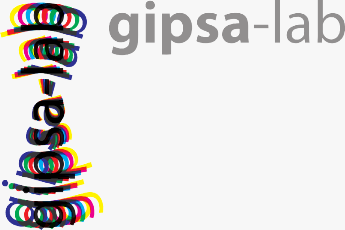5. Control Specifications
The identified models show that both the primary path and the secondary path models have several resonance modes (as well as resonant complex zeros). The most significant are those near 50 Hz (secondary path) and 100 Hz (primary and secondary paths).The narrow band disturbances are located in the range 50 to 95 Hz.
It is important to take in account the fact that the secondary path (the actuator path) has no gain at very low frequencies and very low gain in high frequencies near 0.5 Fs. Therefore the control system has to be designed such that the gain of the controller be very low (or zero) in these regions (preferably 0 at 0.5Fs). Not taking into account these constraints can lead to undesirable stress of the actuator.
It is suggested that participants to the benchmark consider first a linear control design in order to assess the particularities of the secondary path. This design should consider the attenuation of one, two or three sinusoidal disturbances located between 50 and 95 Hz with the objective to introduce attenuation over 40 db at the disturbance frequencies and very little amplification at other frequencies.
Control objectives - Preliminaries
There are several level of difficulties related to the number of sinusoidal disturbances (1, 2 or 3).The width of the frequency region where these disturbances occur is 50-95 Hz.
The easiest level is level 1 (one sinusoidal time varying disturbance within 50-95 Hz) and the most difficult is level 3 (three sinusoidal time varying disturbances within 50-95 Hz).
Level 1
Rejection of a single time varying sinusoidal disturbance within [50 95Hz].
Level 2
Rejection of two time varying sinusoidal disturbances within [50 95Hz].
Level 3
Rejection of three time varying sinusoidal disturbances within [50 95Hz].
The magnitude of the disturbances is specified (see section Evaluation of the Adaptive Controller)
Control objectives - Specifications
The control objectives for all the levels can be divided in three protocols plus some additional tests:
- Step changes in frequencies. Time domain performances: an upper bound for the duration of the adaptation transient is imposed (2 sec) since the time separation between the steps in frequencies will be 3sec. However, the transients will be further compared in terms of maximum value, duration and norm.
-
Evaluation in steady state operation at the frequencies considered above (after
adaptation settles).
Test 1: The steady state performance in time domain will be evaluated by measuring the mean square value of the residual force which will be compared with the value of the residual force in open loop (providing a measure of the global attenuation). The minimum global attenuation imposed for the three levels is shown in Table 1.
Test 2: Power spectral density performances: for constant frequency disturbances, once the adaptation transient is over, the attenuation with respect to the open loop will be measured (using function: spectre_psd_rms.m) The imposed performances in terms of attenuation of the disturbance and tolerated amplification at other frequencies (with respect to the open loop) are presented in Table 1. - Chirp changes in frequency. Time domain evaluation: a linear time varying change between two situations with a corresponding speed (Hz/sec) given in Table 1, will be made. The maximum value of the residual force during the chirp will be measured and should be less than the specifications given in Table 1. The mean square value of the residual force will be also measured and compared.
Supplementary tests (mandatory):
The operation of the system should remain stable for all the levels if one, two or three sinusoidal disturbances are applied simultaneously.
The operation of the loop should remain stable if the disturbance is applied simultaneously with the closing of the loop.
The transients for the case when the disturbances vanish will be tested and measured for all the levels.
Testing protocols are provided (see section Evaluation of the Adaptive Controller).
For the final tests the values of the frequencies of the disturbances will be chosen randomly within the given range (see Evaluation section).
Participants can provide specific adaptive controllers for each of the three levels.
| Control specifications | Level 1 | Level 2 | Level 3 |
| Transient duration | ≤ 2sec | ≤ 2sec | ≤ 2sec |
| Global attenuation | ≥ 30 dB(*) | ≥ 30 dB | ≥ 30 dB |
| Disturbance attenuation | ≥ 40 dB | ≥ 40 dB | ≥ 40 dB |
| Maximum amplification | ≤ 6 dB | ≤ 7 dB | ≤ 9 dB |
| Chirp speed | 10 Hz/sec | 5 Hz/sec | 3 Hz/sec |
| Maximum value during chirp | ≤ 0.1V | ≤ 0.1V | ≤ 0.1V |
(*) For this level, the specification of 30 dB is for the range between 50 and
85 Hz, for 90 Hz is 28 dB and for 95 Hz is 24 dB.
Input magnitude constraint: The
magnitude of the plant control input should be below 0.65 V in all the
situations.
